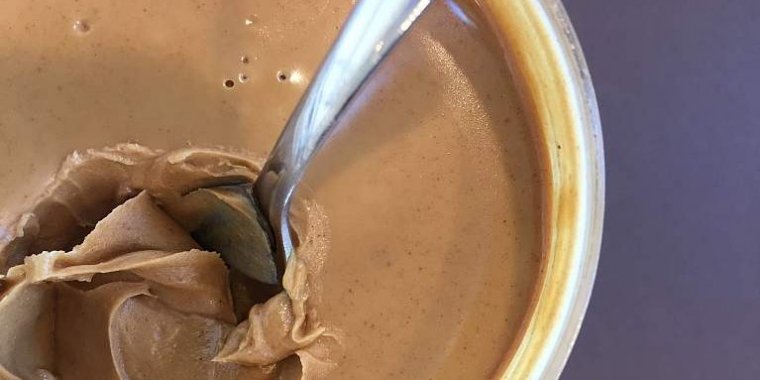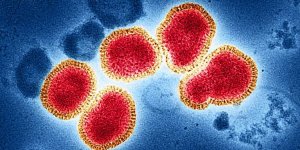| Health / Health News |
Therapy helps peanut-allergic kids tolerate tablespoons of peanut butter
Eating gradually increasing doses of store-bought, home-measured peanut butter for about 18 months enabled 100% of children with peanut allergy who initially could tolerate the equivalent of at least half a peanut to consume three tablespoons of peanut butter without an allergic reaction, researchers report.

Peanut butter. Photo: NIAID
This easy-to-implement treatment strategy could potentially fulfill an unmet need for about half of children with peanut allergy, who already can tolerate the equivalent of at least half a peanut, considered a high threshold.
The findings come from a trial sponsored and funded by the National Institutes of Health’s National Institute of Allergy and Infectious Diseases (NIAID).
“Children with high-threshold peanut allergy couldn’t participate in previous food allergy treatment trials, leaving them without opportunities to explore treatment options,” said NIAID Director Jeanne Marrazzo, M.D., M.P.H.
“Today’s report focuses on this population and shows that a very safe and accessible form of therapy could be liberating for many of these children and their families.”
The food allergy treatments currently approved by the Food and Drug Administration were tested in children with low-threshold peanut allergy, who cannot tolerate the equivalent of even half a peanut.
These treatments are designed to decrease the likelihood of a reaction to a small amount of peanut despite efforts to avoid it, as might occur with accidental exposure.
This approach is not relevant to the estimated 800,000 U.S. children who may have high-threshold peanut allergy, leaving them with only one management strategy prior to the new report: peanut avoidance.
To address this need, researchers tested whether a low-cost, convenient treatment strategy could help children with high-threshold peanut allergy tolerate a much greater amount of peanut protein than they already did.
The mid-stage trial involved 73 children ages 4 to 14 years. Based on parent or guardian report, nearly 60% of the children were white, 19% were Asian, 1.4% were Black, and 22% were more than one race. The study team assigned the children at random to either test the new treatment strategy or continue avoiding peanut.
Those in the peanut-ingestion group began with a minimum daily dose of 1/8 teaspoon of peanut butter.
They gradually increased their dose every eight weeks up to 1 tablespoon of peanut butter or an equivalent amount of a different peanut product, such as peanut flour or candies. Dose increases took place under medical supervision at the study site.
None of the children in the peanut-ingestion group needed epinephrine to treat severe allergic reactions during home dosing, and only one child needed epinephrine during a supervised dosing visit at the study site.
After undergoing the treatment regimen, the peanut-consuming children participated in an oral food challenge carefully supervised by the study team to see how much peanut butter they could eat without an allergic reaction.
All 32 children who participated in the challenge could tolerate the maximum amount of 9 grams of peanut protein, the equivalent of 3 tablespoons of peanut butter.
By contrast, only three of the 30 children in the avoidance group who underwent the oral food challenge after a similar amount of time in the trial could tolerate 9 grams of peanut protein.
Three additional children in the avoidance group tolerated a challenge dose at least two doses greater than the amount they could tolerate at the start of the study.
Children in the peanut-ingestion group who could tolerate 9 grams of peanut protein during the oral food challenge consumed at least 2 tablespoons of peanut butter weekly for 16 weeks, then avoided peanut entirely for eight weeks. At that point, they were asked to return to the study site for a final oral food challenge.
Twenty-six of the 30 treated children (86.7%) who participated in the final challenge continued to tolerate 9 grams of peanut protein, indicating they had achieved sustained unresponsiveness to peanut.
The three children in the avoidance group who could eat 9 grams of peanut protein without a reaction at the earlier challenge were considered to have developed natural tolerance to peanut.
Analyzing these outcomes and including all 73 children who began the trial, regardless of whether they participated in the final challenge, investigators found that 68.4% of the peanut-ingestion group achieved sustained unresponsiveness, while only 8.6% of the avoidance group developed natural tolerance.
Based on these encouraging results, the investigators want to learn if the same treatment strategy would work for food allergens other than peanuts. Future follow-up is needed to determine the therapy’s effectiveness at inducing long-lasting tolerance of peanut.
YOU MAY ALSO LIKE





